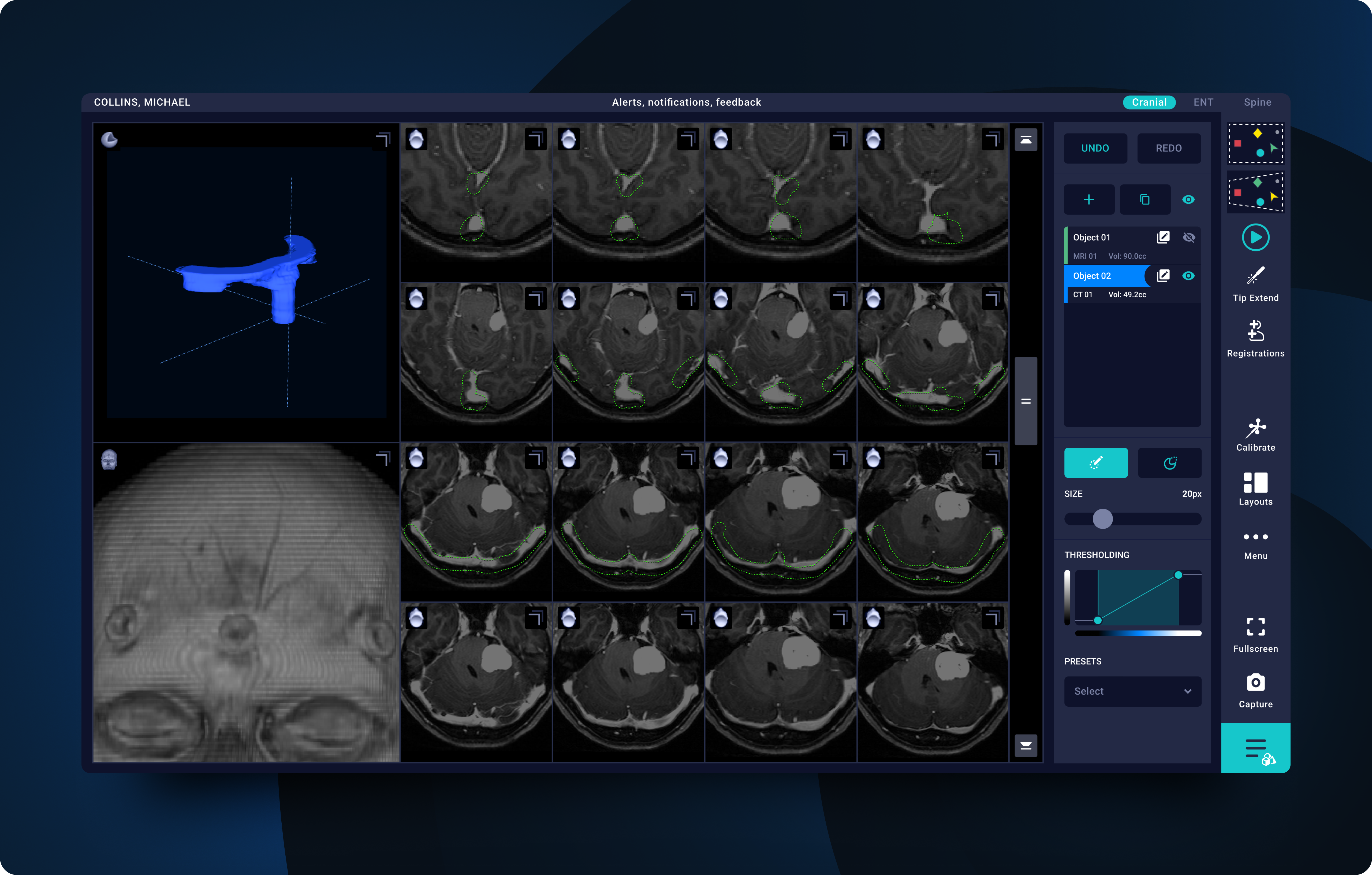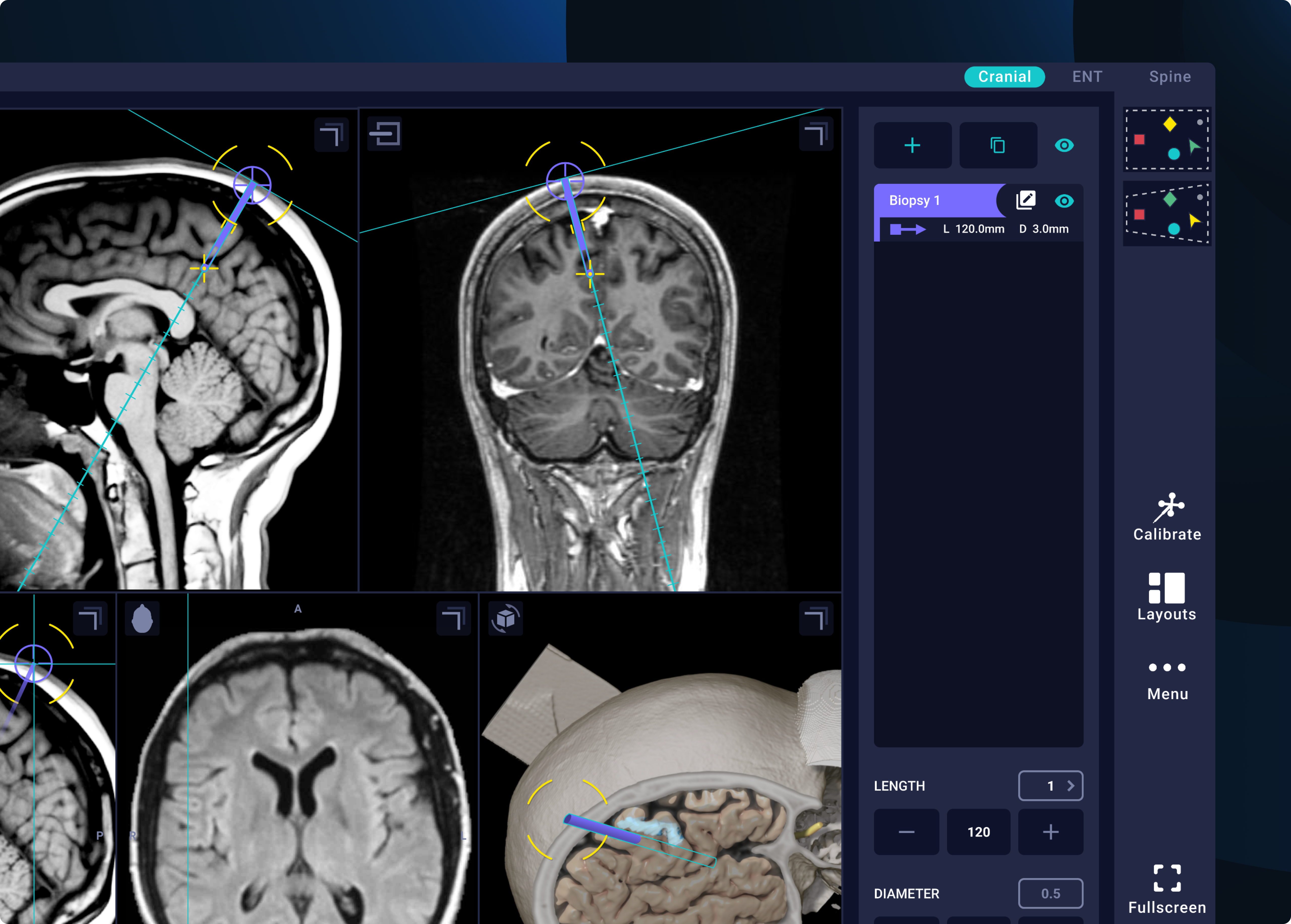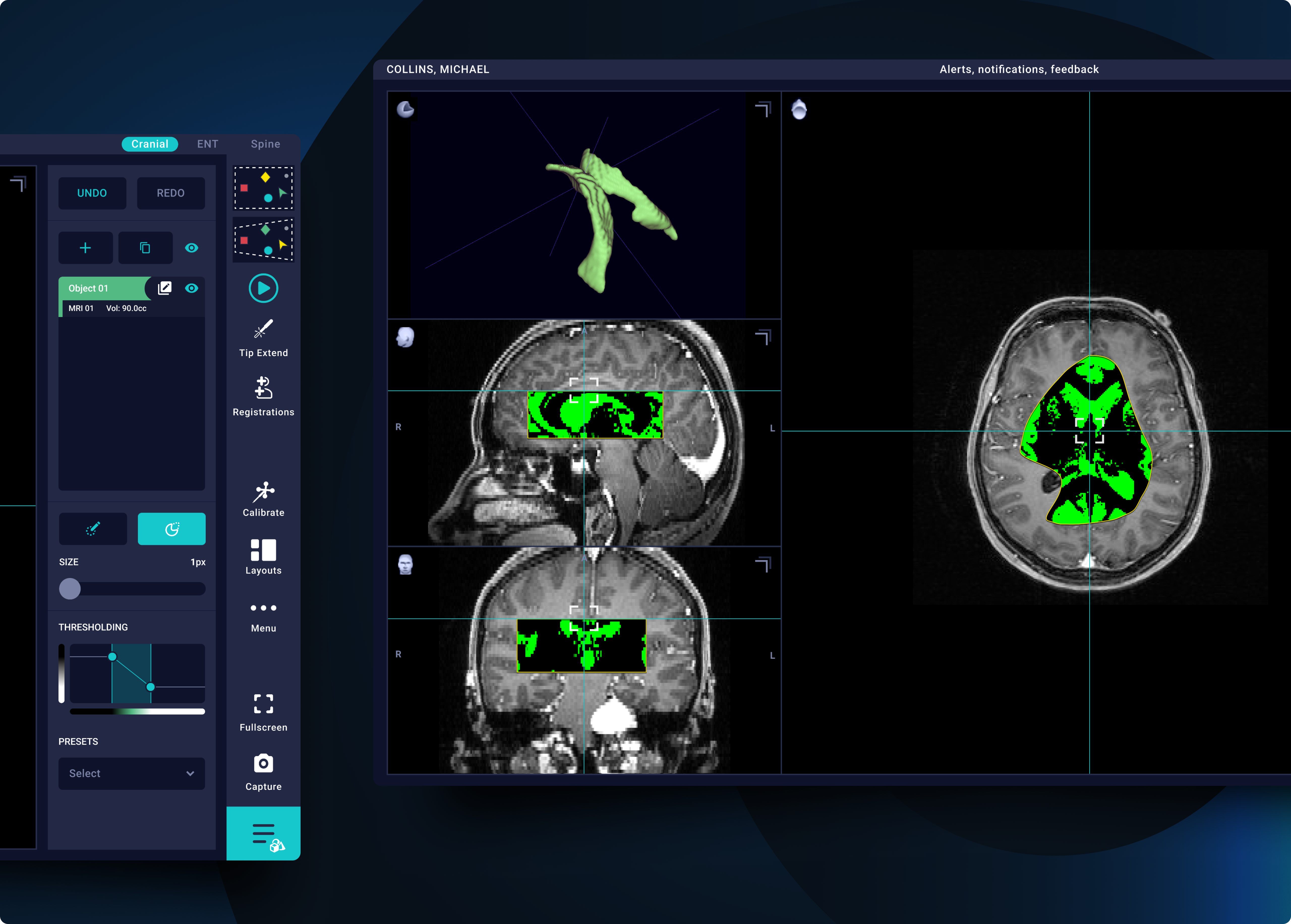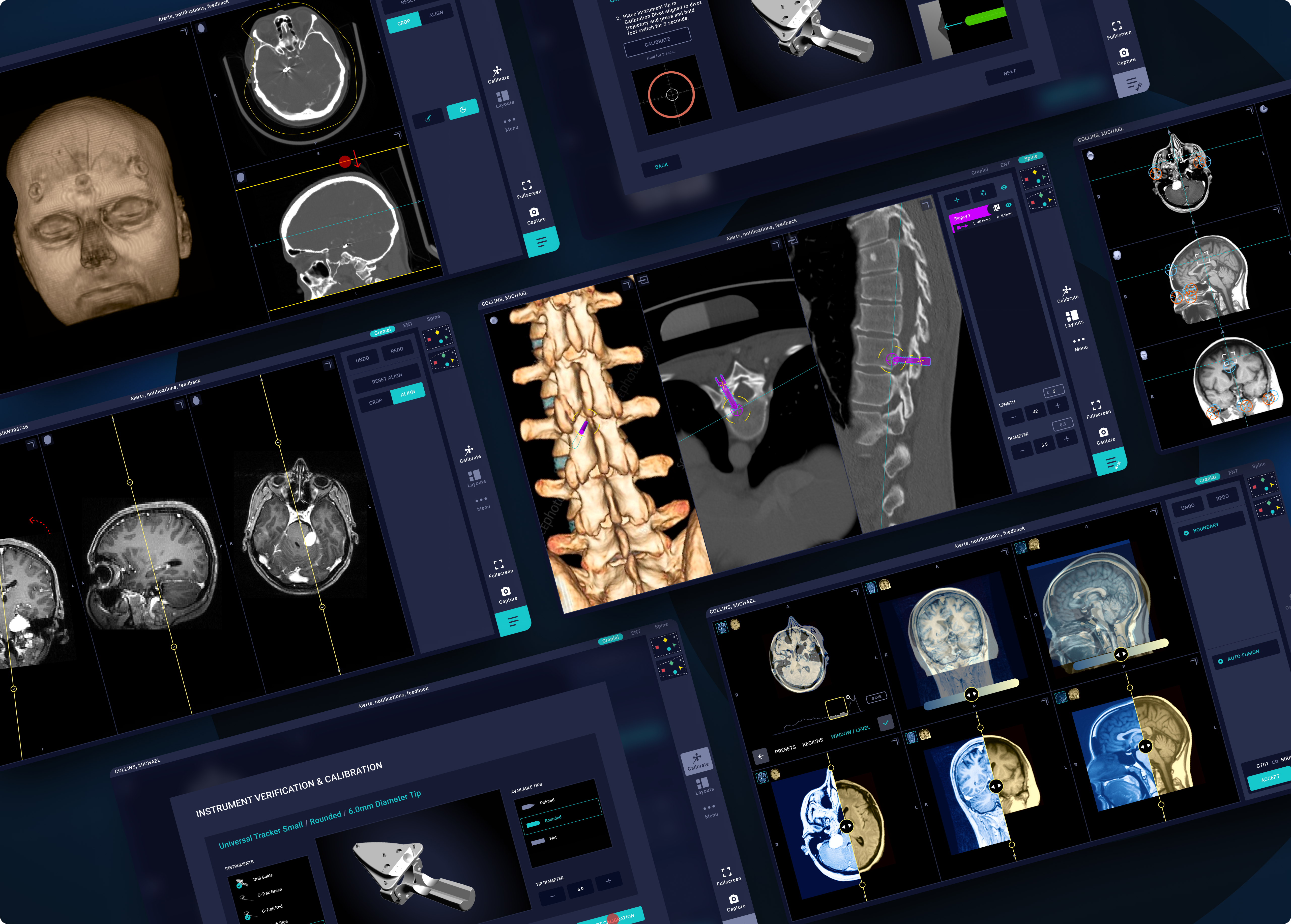CBYON: Redesigning a Surgical Guidance App for Robotic ENT Procedures.
Role & Contributions
Product Designer·User Research·Prototyping
Key Achievements
Redesigned the interface with a gesture-based approach focused on ergonomic interactions, enabling surgeons to control robotic arms more intuitively and efficiently.
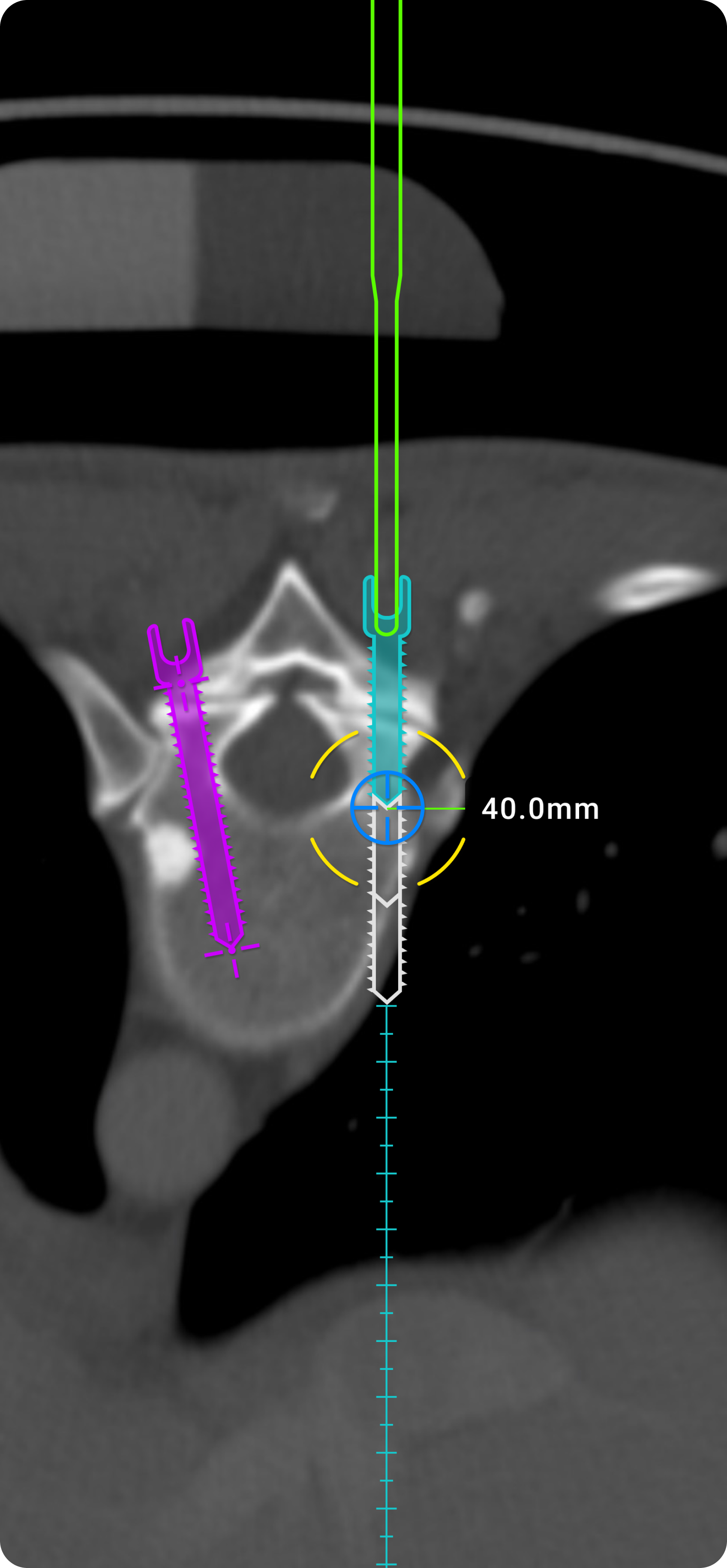
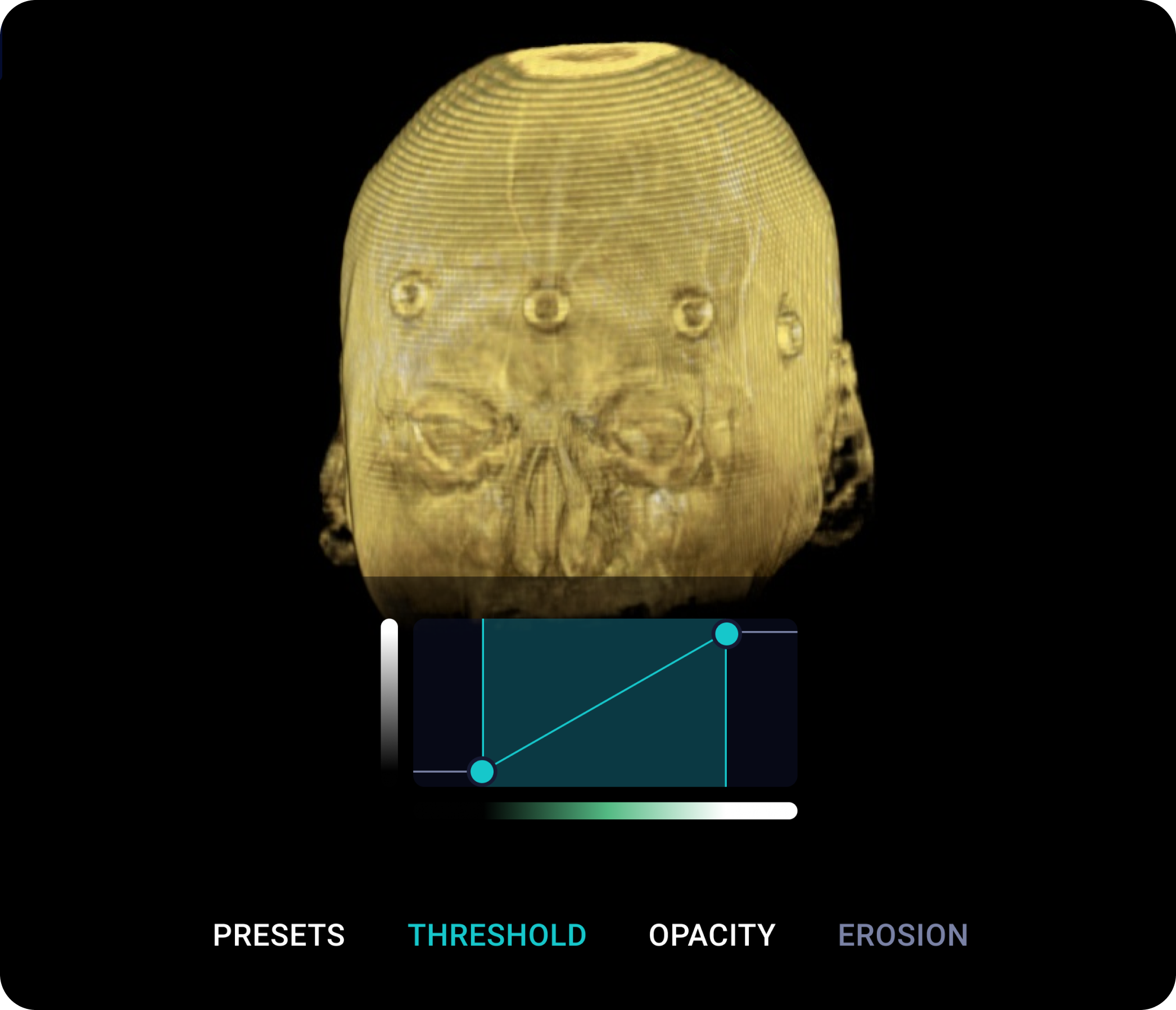
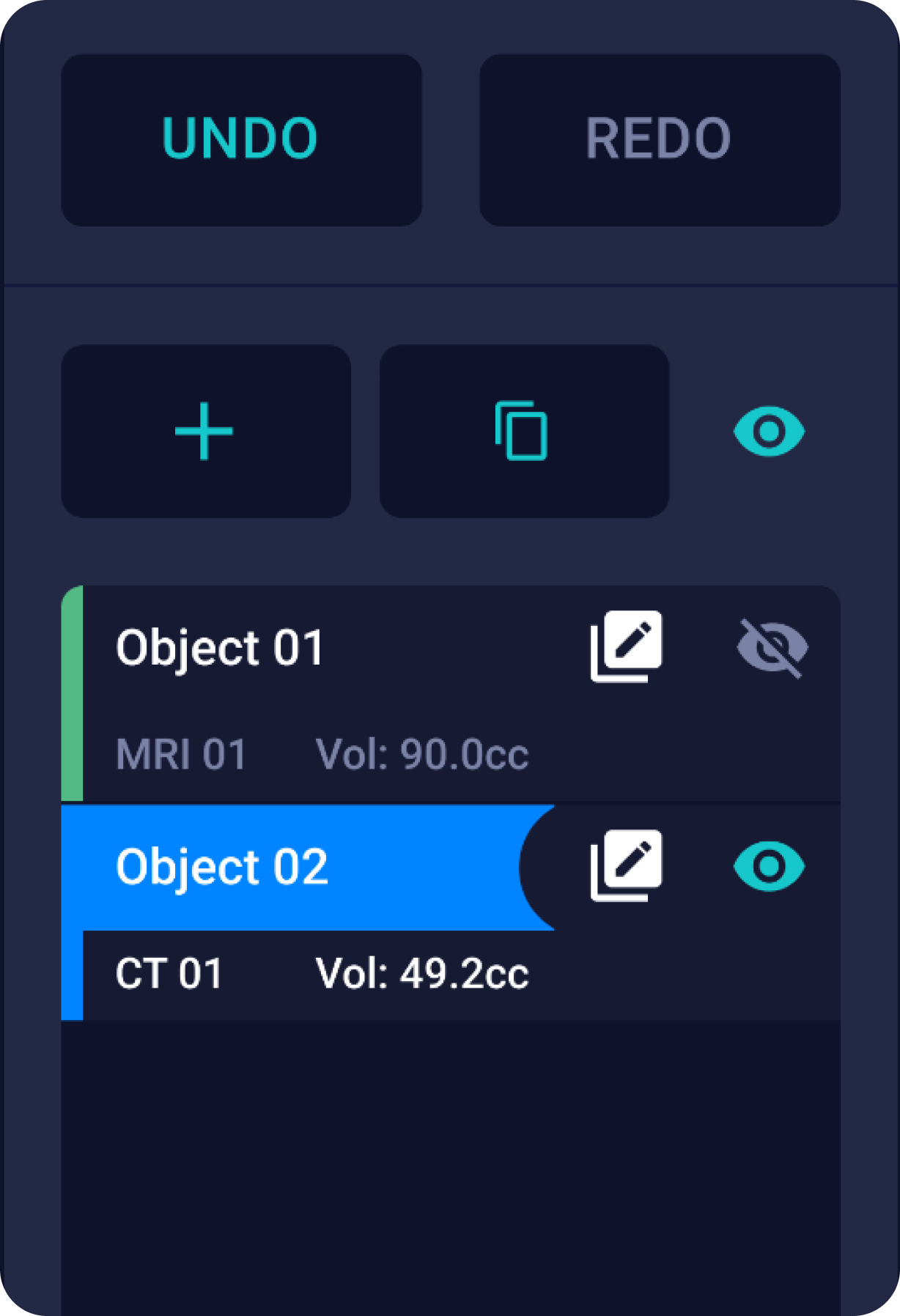
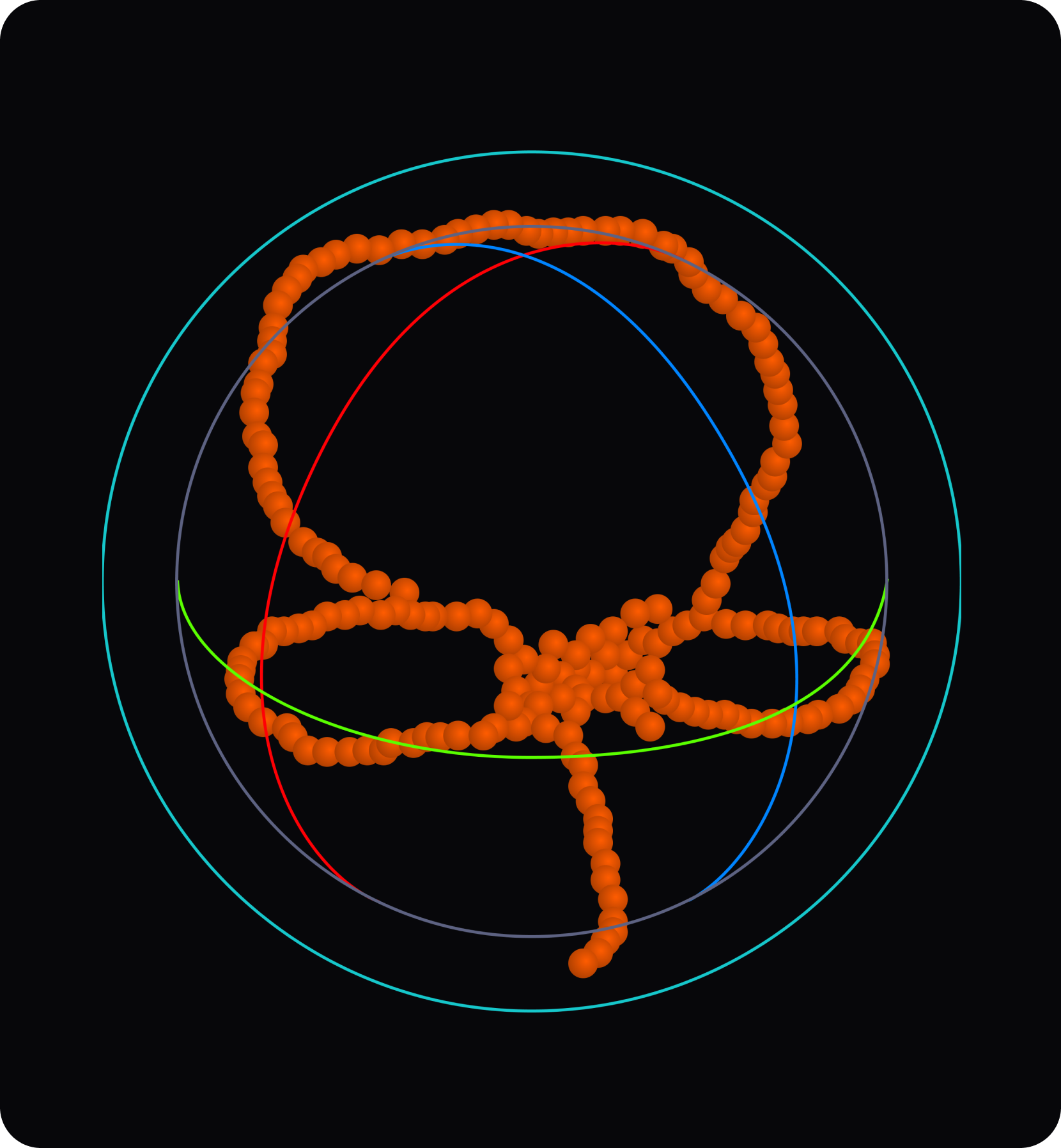
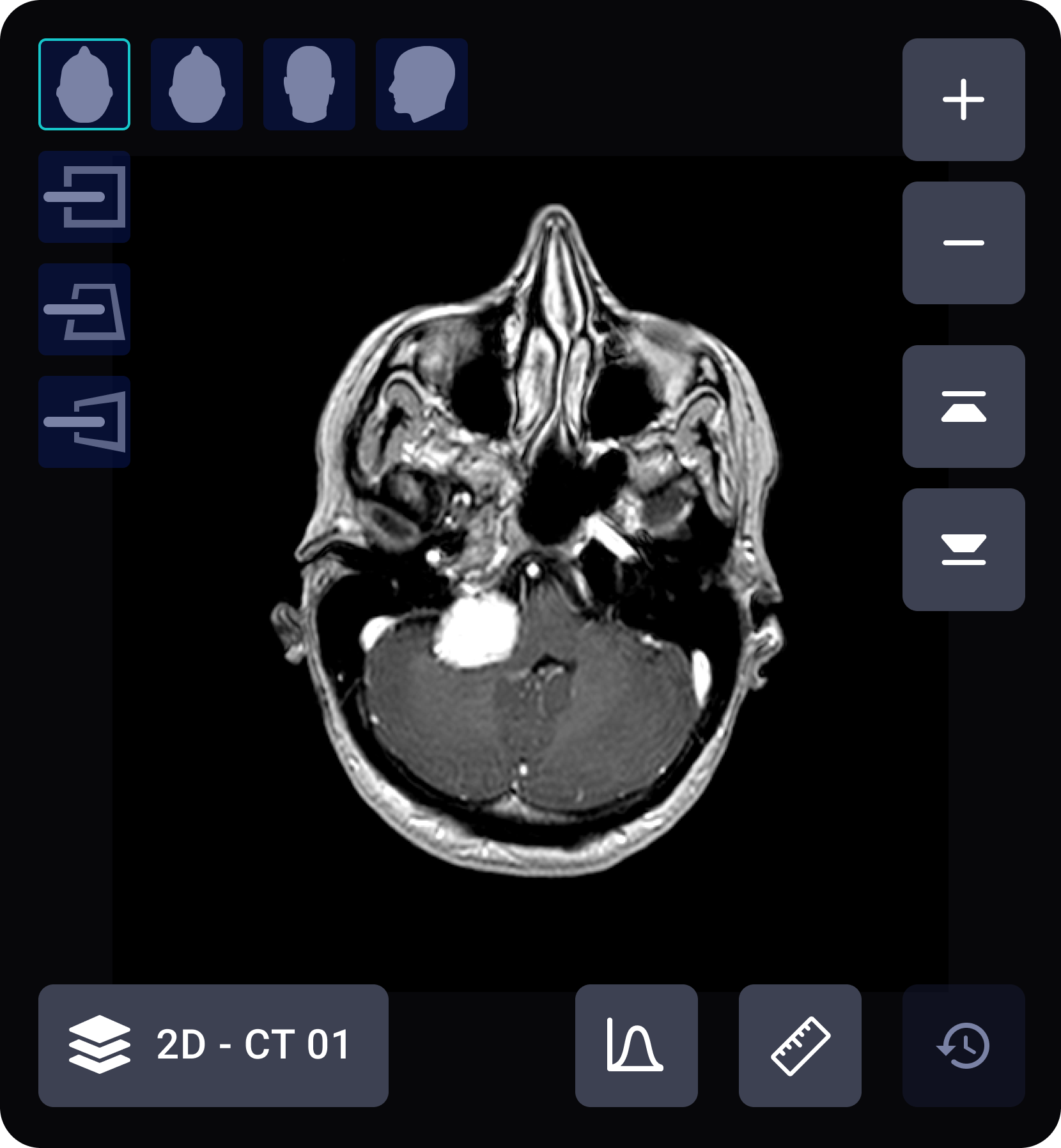
Project Overview
CBYON is a cutting-edge surgical guidance application that enables ENT surgeons to control robotic arms using real-time 3D scanning technology. Despite its technological advancements, the app faced usability challenges that hindered adoption and efficiency in the operating room. My task was to redesign the app to enhance usability, reduce cognitive load, and improve surgical precision. The project spanned over two years, during which I served as the Lead Product Designer, using tools like Figma, Axure RP, and Origami Studio.
The original CBYON app had usability issues that hindered operating room adoption. Its cluttered interface made accessing critical controls difficult, navigation was unintuitive, robotic arm controls were complex, and 3D visualization lacked precision.
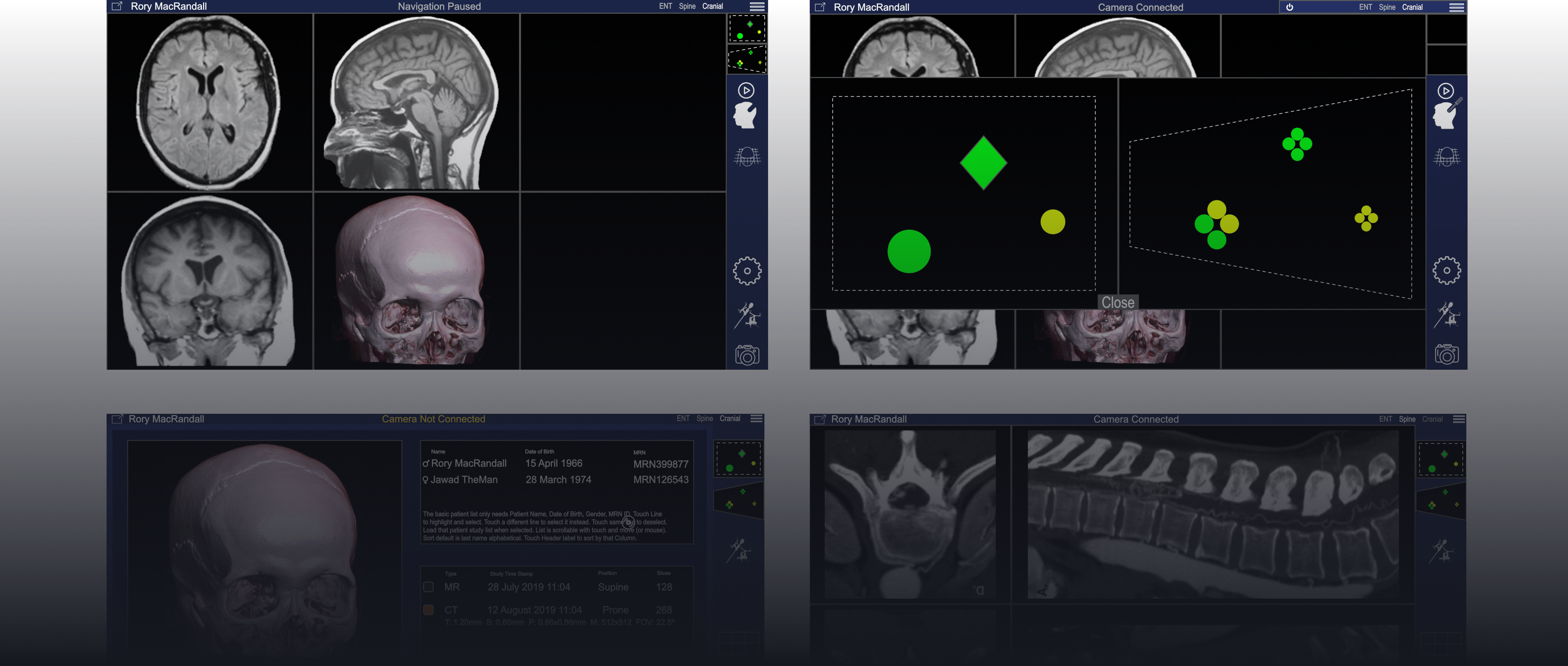
Goals and Objectives
The redesign aimed to simplify the user interface to reduce cognitive load during surgeries, improve real-time 3D visualization capabilities, streamline robotic arm control for intuitive operation, and ensure compliance with medical UI safety standards.

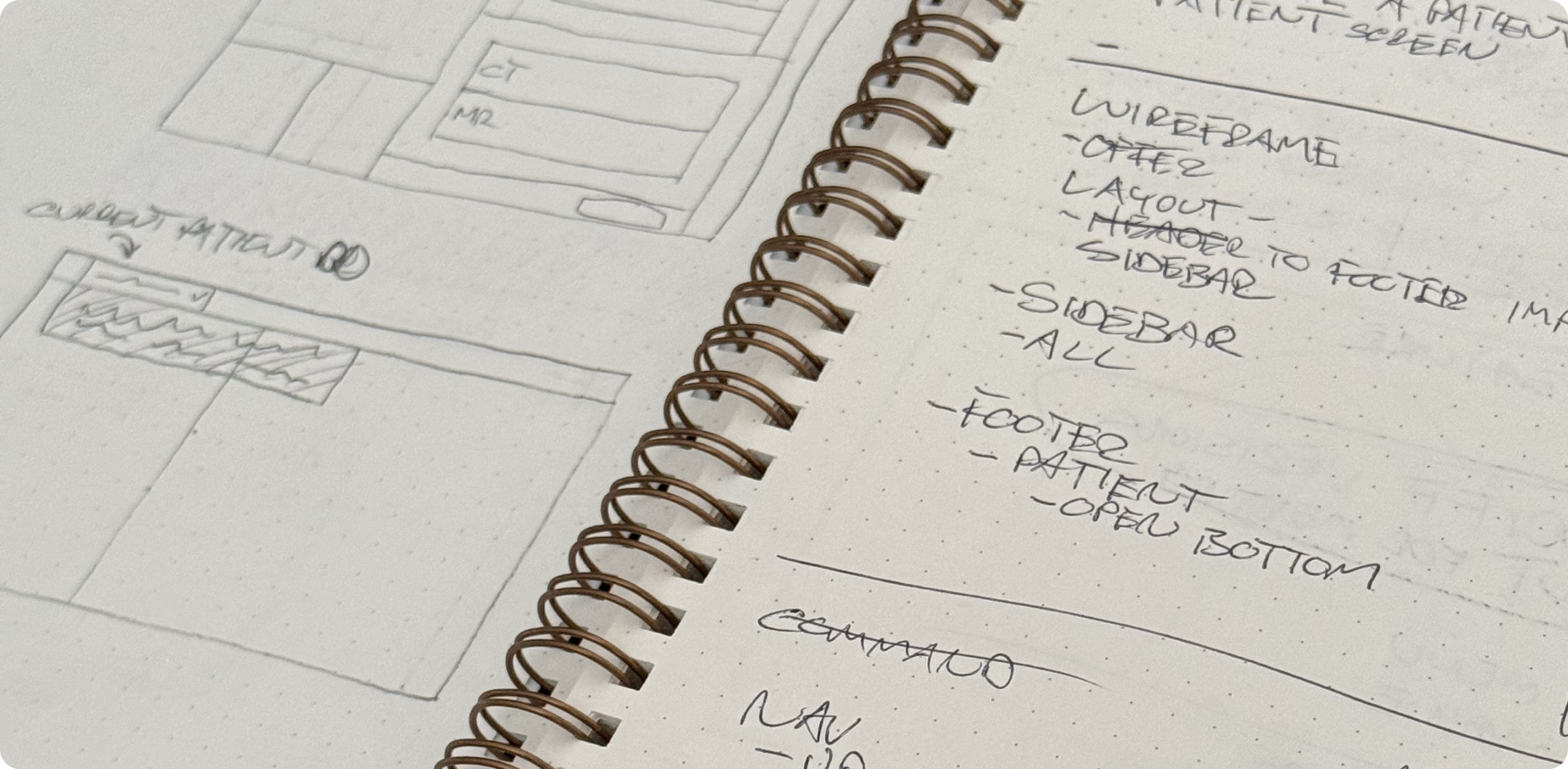
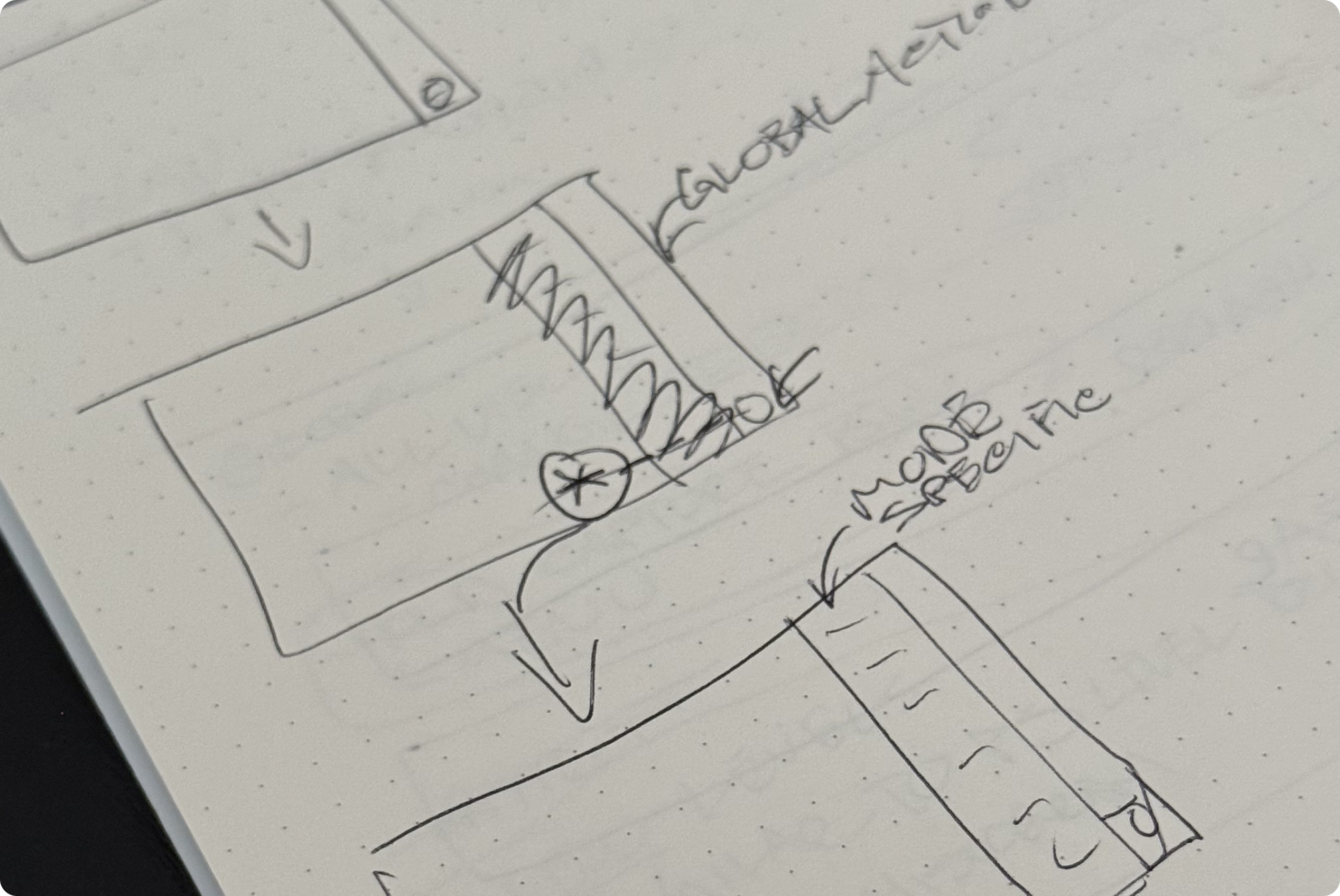
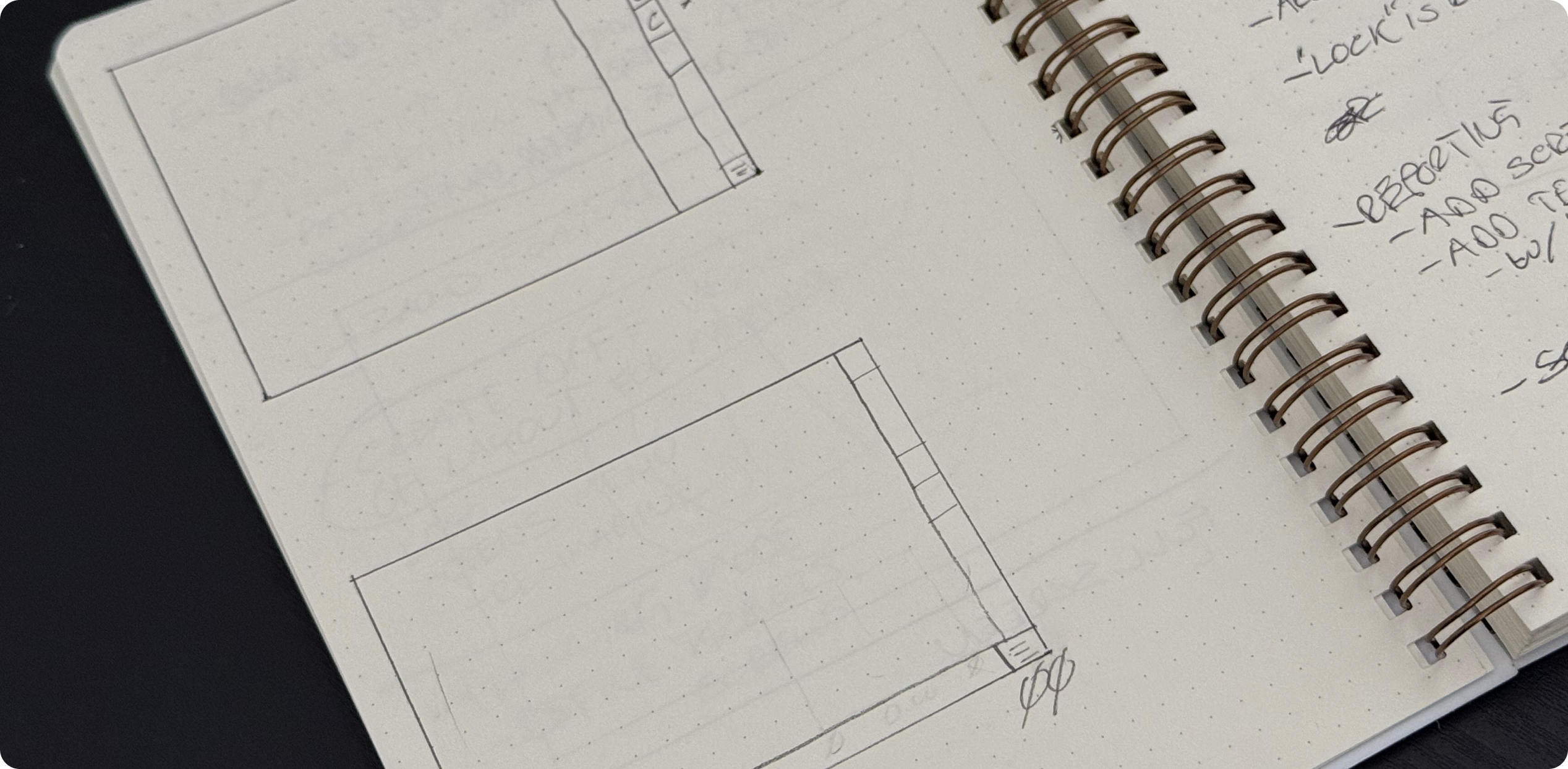
Design Process
I restructured the app’s navigation to create a streamlined information hierarchy. Wireframes were developed to visualize the new layout, emphasizing quick access to essential controls and real-time metrics.
The interface was designed with a minimalist approach to reduce visual noise, focusing on high-contrast color schemes for better visibility, dynamic interactive 3D anatomical models, and a clean dashboard that displayed only the most critical surgical data.
Low-fidelity prototypes were developed to test key interactions, transitioning to high-fidelity prototypes that simulated real-world conditions. I created a robust design system including color and value tokens for consistent UI elements, interactive components for robotic controls, and medical-standard iconography.
I created a prototype to demonstrate system navigation and touch interactions for cranial point collecting, highlighting an intuitive workflow and precise gestures for improved surgical efficiency.
Key Challenges and Solutions
One challenge was the complexity of robotic arm controls. I developed gesture-based controls that allowed surgeons to adjust robotic arms with minimal interaction. Visual clutter during procedures was another issue. I implemented a context-aware UI that dynamically displayed only relevant information based on the surgical phase. Inefficient 3D visualization was addressed by integrating an advanced rendering engine for smoother, more accurate anatomical models.
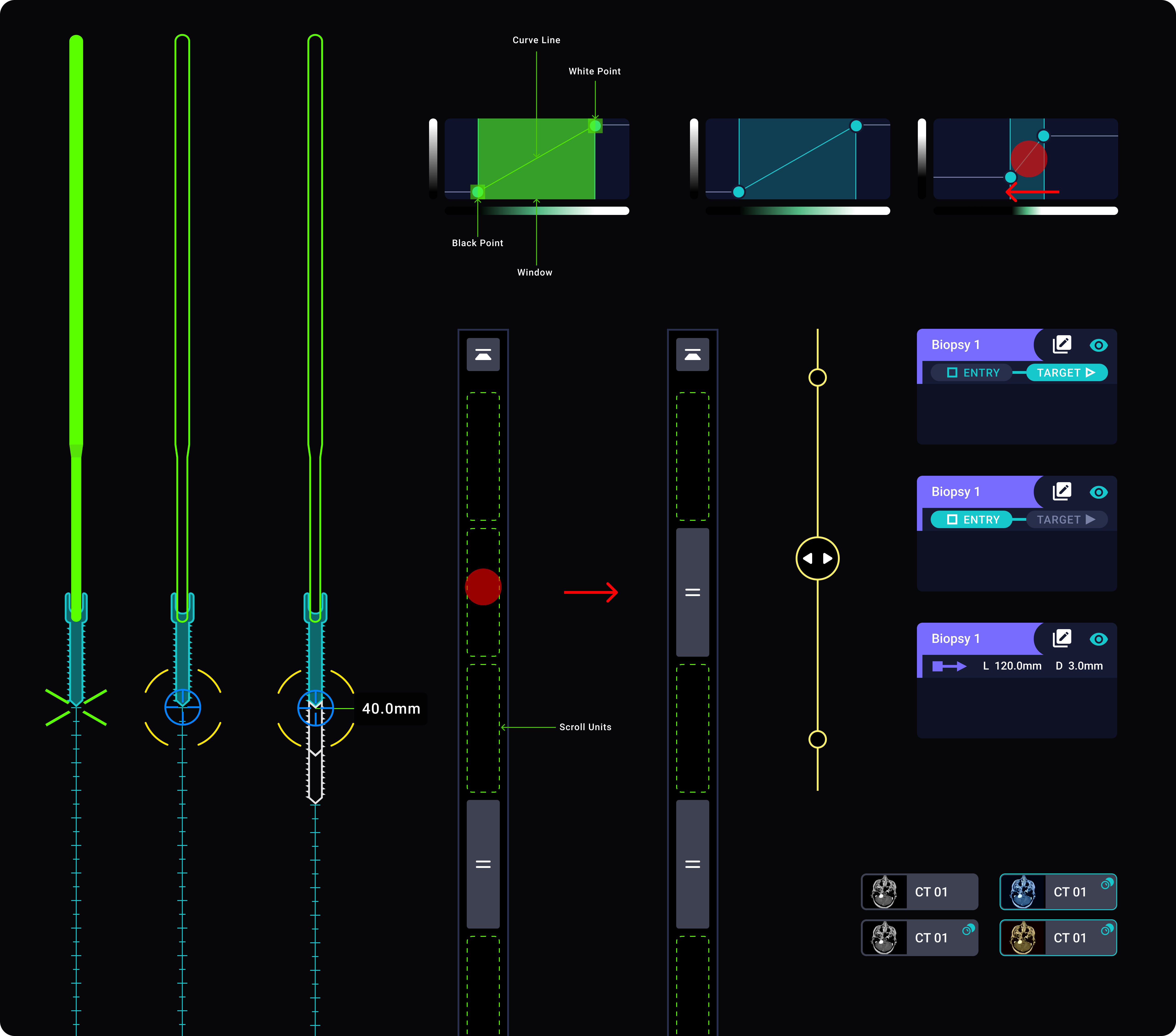
Final Solution
The redesigned CBYON app delivered a seamless and intuitive experience for surgeons, enhancing their ability to perform precise and efficient ENT procedures. Key features included gesture-based robotic controls, real-time 3D visualization, and a context-aware interface that minimized cognitive load during procedures.
